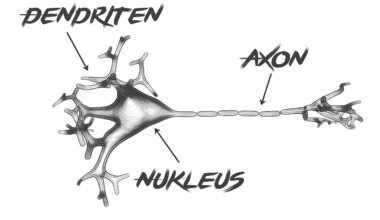How to Start a Safe Fitness Regimen After 60
Beginning a fitness regimen at the age of sixty or above can effectively improve both physical and mental health. It is crucial, however, to approach this transition with caution and mindfulness. Before you begin, consult your doctor, especially if you have pre-existing health conditions or concerns. They may provide specific guidelines tailored to your needs. It is also essential to consider your current activity level and gradually progress. Recommended activities include walking, swimming, or gentle stretching. Start with short sessions and slowly build your endurance. Keep in mind that consistency is key. Aim to incorporate some physical activity into your routine at least three to five times weekly. This gradual approach not only suppresses injury risk but also boosts confidence in your body’s capabilities. Joining a class or group targeted towards older adults can provide motivation and accountability. Finally, focus on strength training and balance exercises to promote overall health. Don’t hesitate to seek guidance from fitness professionals who specialize in senior fitness. They can help design a program that aligns with your individual goals and health condition.
Understanding Your Body’s Needs
It’s crucial to understand that your body may respond differently to exercise as you age. Muscle mass naturally diminishes over time, which can lead to decreased strength and stamina. Therefore, incorporating strength training into your routine becomes increasingly important. Aim for muscle-strengthening activities at least twice a week, focusing on major muscle groups. Additionally, flexibility improves joint health and decreases the chance of injuries. Activities like yoga or Pilates can significantly enhance your flexibility. Listening to your body is vital during this process, as both fatigue and soreness can indicate that you might need a break or a modified exercise. Always remember to warm-up before diving into activities and cool down afterward. Hydration is crucial as well since the body’s thirst mechanism dulls with age. Keep a water bottle handy to ensure you drink enough throughout your exercise sessions. Lastly, don’t underestimate the value of rest days. Your body requires time to recuperate and build strength. Ensuring you prioritize rest within your regimen fosters recovery and avoids burnout.
Choosing the Right Activities
When selecting fitness activities, consider options that you genuinely enjoy. Enjoyable exercises motivate adherence to a fitness regime. Cardio activities such as walking, cycling, or swimming can enhance cardiovascular health and elevate mood. Non-impact aerobics are great for individuals concerned about joint strain. Engaging in social activities such as dance classes can make workouts enjoyable and foster connections with others. Balance exercises are also key components in fitness, specifically to prevent falls. Simple practices such as standing on one foot or heel-to-toe walking can enhance stability. Pairing these with strength training can significantly increase muscular endurance and overall fitness levels. Consider joining community programs focused on fitness for seniors. These often provide safe environments tailored to your age group and capabilities. Furthermore, they can offer resources, such as group classes or personal trainers knowledgeable about senior fitness needs. Always introduce new activities gradually and be mindful of how your body reacts. If you’re feeling any discomfort or excessive fatigue, reconsider the intensity or type of exercise you’re doing.
Setting realistic and measurable goals is a critical aspect of a successful fitness regimen. Instead of aiming for an overwhelming end goal, break your aspirations into smaller, achievable milestones. These could include walking an extra ten minutes each session or targeting a specific number of workout sessions per week. Celebrating these small victories reinforces motivation and confidence. Consider keeping a fitness journal where you note your workouts, progress, and how you feel overall. Documenting your journey can provide insights into what works best for you while adding a personal touch to your experience. When you don’t see immediate results, remain patient and stay focused on consistent effort. Habits take time to form, and the benefits of exercise on overall well-being are cumulative. Share your goals with family or friends who can encourage and support you, enhancing accountability. Additionally, consider utilizing apps or online platforms tailored for seniors to track fitness progress or join virtual exercise classes. By focusing on gradual improvement and maintaining an optimistic mindset, you can create a long-lasting, enjoyable fitness journey.
Staying Safe During Exercise
Safety should always be your priority when embarking on a fitness journey. Proper footwear is vital, as it can prevent slips and injuries. Look for shoes specifically designed for your chosen activities. Always pay attention to your environment, particularly when walking or exercising outdoors. Look out for uneven surfaces or obstacles that may pose risks. Slow down if you find yourself feeling dizzy or overly tired. Stretching before and after workouts significantly reduces the risk of injury by enhancing flexibility and relieving muscle tension. In addition, refrain from pushing through sharp or persistent pains; these can indicate injury. Acknowledge your body signals and learn to differentiate between regular discomfort and pain that warrants concern. Seek immediate medical attention if you experience breathing difficulties, chest pressure, or extreme fatigue during any activity. Furthermore, exercising with a partner or in a group can enhance safety, as someone is more likely to notice and assist if an issue arises. While personal motivation is essential, sharing your activities with friends makes the experience even more enjoyable.
Nutrition plays a pivotal role in achieving fitness goals and supporting a healthy lifestyle. As you increase your physical activity, adjusting your nutrition becomes integral. A balanced diet rich in fruits, vegetables, whole grains, lean proteins, and healthy fats fuels the body for optimal performance. Protein, in particular, helps in repairing and building muscle, which is essential as you incorporate strength training. Prioritize hydration, especially if engaging in high-intensity activities. Water is vital for hydration, yet consider incorporating electrolyte-rich drinks for extended or intense workouts. Furthermore, being mindful of portion sizes can greatly influence overall health. Using smaller plates may help control portions while still allowing variety in meals. It’s also essential to minimize processed foods that can lead to unnecessary weight gain and health issues. Consulting with a dietitian can provide personalized nutrition advice that aligns with your fitness goals and health condition. Engaging in mindful eating practices, eating slowly, and appreciating food’s flavors can improve digestion and satisfaction. Remember that good nutrition complements physical activity and contributes to a total wellness approach.
Building Community for Support
Establishing a fitness routine after sixty can feel daunting, but building a community greatly eases this journey. Consider joining local gyms or community centers that offer fitness classes specifically tailored for older adults. These environments foster camaraderie and provide social interaction, making workouts more enjoyable. Moreover, participating regularly allows for developing valuable friendships. Online platforms can also connect you to virtual exercise groups and forums that focus on healthy aging. Sharing experiences, tips, and challenges can alleviate feelings of isolation while inspiring motivation. Find buddies either in person or online through fitness apps or social media. Engaging with others while exercising can transform a mundane routine into an exciting adventure. It’s natural to face setbacks, but having a supportive community can provide encouragement and accountability during challenging times. Moreover, consider participating in local charity events, walks, or community sports that prioritize health and wellness. This not only supports your fitness goals but also contributes positively to your community. By embracing a supportive fitness environment, you’re more likely to sustain a long-term healthy lifestyle.


